Milwaukee 6792-20 Handleiding
Milwaukee
Boormachine
6792-20
Bekijk gratis de handleiding van Milwaukee 6792-20 (12 pagina’s), behorend tot de categorie Boormachine. Deze gids werd als nuttig beoordeeld door 31 mensen en kreeg gemiddeld 5.0 sterren uit 16 reviews. Heb je een vraag over Milwaukee 6792-20 of wil je andere gebruikers van dit product iets vragen? Stel een vraag
Pagina 1/12

Cat. No. / No de cat.
6580-20, 6740-20, 6742-20, 6780-20,
6790-20, 6791-20, 6791-21, 6792-20
OPERATOR'S MANUAL
MANUEL de L'UTILISATEUR
MANUAL del OPERADOR
WARNING To reduce the risk of injury, user must read and understand operator's manual.
AVERTISSEMENT Afi n de réduire le risque de blessures, l'utilisateur doit lire et bien
comprendre le manuel.
ADVERTENCIA Para reducir el riesgo de lesiones, el usuario debe leer y entender el manual.
HEAVY-DUTY SCREWDRIVER
EXTRA ROBUSTE TOURNEVIS
DESTORNILLADORES HEAVY-DUTY

45
Installing and Removing Bits
TEKS Ramp-O Locator Assembly
The locator assembly must
Magnetic socket
Locator
Ramp-o
sleeve
be removed when chang-
ing bit sizes.
1. Unplug tool. To remove
the locator assembly,
t u r n t h e r a mp-off
sleeve while pulling it
away from the tool.
2. Pull out the magnetic
socket and replace it with a new socket.
3. Push the locator assembly onto the nose of the
tool until it snaps into place.
Installing and Removing Bits
Drywall Ramp-O Locator Assembly
Bit holder
Insert bit
Locator
Ramp-o
sleeve
1. Unplug tool. To remove the locator assembly, turn
the ramp-o sleeve while pulling it away from the
tool.
2. Push insert bit into bit holder until it snaps into
place. Push the bit holder into the nose of the tool
until it snaps into place.
3. Push the locator assembly onto the nose of the
tool until it snaps into place.
Installing and Removing Magnetic
Sockets on Adjustable Screwdrivers
For Cat. No. 6580-20
1. Unplug tool.
2. To remove the magnetic socket, slide the locking
sleeve forward and pull out the socket.
Locking sleeve
Socket
3. To install the magnetic socket, slide the locking
sleeve forward and push in the socket until it is
fully seated.
For Cat. No. 6780-20
1. Unplug tool.
2. To remove the magnetic socket, slide the locking
sleeve forward and pull out the socket.
Locking sleeve
Socket
3. To install the magnetic socket, simply push in the
socket until it snaps into place.
OPERATION
WARNING
To reduce the risk of injury, always
wear safety goggles or glasses
with side shields.
Using Forward/Reverse Switch
1. For forward (clockwise)
Forward
Trigger
Reverse
Switch
Front of Tool
rotation, push the for-
ward/reverse switch to
the left position as
shown.
2. For reverse (coun-
terclockwise) rotation,
push the forward/re-
verse switch to the right
position as shown.
Although an interlock
prevents reversing the
tool while the motor
is running, allow it to
come to a full stop be-
fore reversing.
WARNING
To reduce the risk of injury, keep
hands and cord away from the bit
and all moving parts.
Starting, Stopping and Controlling Speed
1. To start the tool, pull the trigger.
2. To stop the tool, release the trigger.
3. To vary the drilling speed, simply increase or
decrease pressure on the trigger. The further the
trigger is pulled, the greater the speed.
Locking Trigger
The lock button holds the trigger in the ON position
for continuous full speed use.
1. To lock the trigger, hold the lock button in while
pulling the trigger. Release the trigger.
2. To unlock the trigger, pull the trigger and release.
The lock button will pop out.
Adjusting Locator Assembly
The locator assembly controls the tool's driving
depth. These screwdrivers feature a locator assembly
with one-handed depth adjustment. Depth adjust-
ments can be made easily and quickly by turning
the locator with one hand. Detents inside the sleeve
“lock” the selected depth.
For the drywall ramp-o locator assembly, start with
about 1/16" clearance between the head of the screw
and nose with the snap-action clutch disengaged
as shown.
For both locator assemblies, the
1/16"
detents on the inside of the
sleeve represent different
depths. Every two clicks of the
locator equal 1/64". Continue
adjusting the locator to the
desired depth.
1. To increase the driving
depth, simply rotate the loca-
tor in the direction labeled .
2. To decrease the driving
depth, simply rotate the loca-
tor in the direction labeled .
The detents “lock” the locator
in place, ensuring an accurate depth setting.
3. To remove the locator assembly, turn the ramp-o
sleeve while pulling it away from the tool. Reat-
taching the locator assembly will not change the
depth setting.
SPECIFICATIONS
Volts .............................................................120 AC
Amps ..................................................................6.5
Cat. No. ..................................................... 6580-20
RPM ............................................................ 0 -1200
Cat. No. ..................................................... 6740-20
RPM ........................................................... 0 - 2500
Cat. No. ..................................................... 6742-20
RPM ........................................................... 0 - 4300
Cat. No. ..................................................... 6780-20
RPM ........................................................... 0 - 2900
Cat. No. ..................................................... 6790-20
RPM ........................................................... 0 - 2500
Cat. No. ..................................................... 6791-20
RPM ........................................................... 0 - 2500
Cat. No. ..................................................... 6791-20
RPM ........................................................... 0 - 2500
Cat. No. ..................................................... 6792-20
RPM ........................................................... 0 - 2500
FUNCTIONAL DESCRIPTION
1234
7
1. Locator
2. Ramp-o sleeve
3. Nameplate
8
9
10
4. Belt clip
5. Bit clip
6. Handle
7. Lock button
8. Trigger
9. Forward/Reverse switch
10. Gear case
6
5
ASSEMBLY
WARNING
To reduce the risk of injury, always
unplug tool before changing or
removing accessories. Only use accessories
specifi cally recommended for this tool. Others
may be hazardous.
Removing and Replacing Quik-Lok® Cords
(Cat. No. 6580-20, 6791-20)
MILWAUKEE's exclusive Quik-Lok
® Cords provide
instant fi eld replacement or substitution.
1. To remove the Quik-Lok® Cord, turn the cord nut
1/4 turn to the left and pull it out.
2. To replace the Quik-Lok
® Cord, align the connector
keyways and push the connector in as far as it will
go. Turn the cord nut 1/4 turn to the right to lock.
Adjusting Torque Setting
These screwdrivers have a torque setting adjustment
collar for driving different types of screws into different
materials. When properly adjusted, the clutch will slip
at a preset torque to prevent driving the screw too
deep and to prevent damage to the screw or tool.
For Cat. Nos. 6580-20
The 6580-20 Screwdriver has a torque setting adjust-
ment collar that may be adjusted to one of forty-four
settings. The torque is adjustable from 10 to 140
inch-pounds.
To select a setting, turn the adjustment collar in the
direction indicated on the tool. The selected setting
will appear in the window as shown.
HIGHER -TORQUE - LOWER
SETTING
NOTE: Use a piece of scrap material to test the dif-
ferent settings before driving screws into workpiece.
To determine a specifi c setting for your application,
use a torque wrench to check the correct torque at
any particular setting.
For Cat. No. 6780-20
The 6780-20 Screwdriver has a torque setting adjust-
ment collar that may be adjusted to one of twenty-one
settings. The torque is adjustable
from 10 to 140 inch-pounds.
To select a setting, turn the ad-
justment collar on the tool. The
selected setting will appear above
the arrow as shown.
NOTE: Use a piece of scrap mate-
rial to test the dierent settings be-
fore driving screws into workpiece.
To determine a specifi c setting for your application,
use a torque wrench to check the correct torque at
any particular setting.

67
APPLICATIONS
WARNING
To reduce the risk of electric shock,
check work area for hidden pipes
and wires before drilling or driving screws.
Driving Drywall Screws
For Screwdrivers Rated up to 4300 RPM
Standard drywall screws are generally designed
for attaching drywall to wood studs and 26 through
20-gauge steel studs. MILWAUKEE Screwdrivers are
ideal for driving these types of drywall screws. The
depth setting is very important. Refer to the guide
below for the correct depth setting.
Too deep. Head of screw
punches hole in drywall
surface, making finishing
diffi cult and allowing moisture
beneath facing. Decrease
depth.
Too shallow. Head of screw
extends above drywall face
and can not be fi nished off.
Increase depth.
Correct. Head of screw is
below surface, but does not
puncture facing.
1. Select the proper drywall screw for each job. Pilot
holes are not needed. To insert screws, place the
screw onto the insert bit, then align the screw
against the work surface, making sure to hold the
tool and screw square to the work surface.
If the tool or screw are misaligned, the screw will
not drive into the work surface or it will not drive
straight.
2. Pull the trigger and push the tool forward with
a “punching” motion to sink the screw into the
drywall. A punching motion will engage the snap-
action clutch, cause the screw to start rotating,
sink the screw and disengage the snap-action
clutch within a fraction of a second. If pressure
is not maintained on the tool after engaging the
snap-action clutch, the screw will not properly seat.
The snap-action clutch will automatically disen-
gage and the insert bit will stop rotating once the
screw has been driven to the selected depth.
These screwdrivers feature a snap-action clutch,
which may ratchet slightly when the screw is sunk
to the selected depth.
NOTE: Practice driving screws into pieces of scrap
material to become familiar with the tool and the
snap-action clutch action before attempting to
drive screws into the workpiece.
3. To remove screws, remove the locator assembly
and switch the forward/reverse switch to the re-
verse position. Reattaching the locator assembly
will not change the depth setting.
Driving Decking Screws
For Screwdrivers with Depth Locators
Rated up to 2900 RPM
Standard decking screws are generally designed for
attaching wood to wood studs. MILWAUKEE Screw-
drivers are ideal for driving these types of decking
screws. The depth setting is very important. Refer to
the guide below for the correct depth setting.
Too deep. Head of screw
punches hole in surface,
allowing moisture to collect.
Decrease depth.
Too shallow. Head of screw
extends above surface.
Increase depth.
Correct. Head of screw is
below surface.
1. Select the proper decking screw for each job. Pilot
holes are not needed. To insert screws, place the
screw onto the insert bit, then align the screw
against the work surface, making sure to hold the
tool and screw square to the work surface.
If the tool or screw are misaligned, the screw will
not drive into the work surface or it will not drive
straight. Wood screws have sharp points or drill
points, and course threads that help the screw
through the wood.
2. Pull the trigger and push the tool forward to sink
the screw into the wood. A quick motion will en-
gage the snap-action clutch, cause the screw to
start rotating, sink the screw and disengage the
snap-action clutch within a fraction of a second.
If pressure is not maintained on the tool after en-
gaging the snap-action clutch, the screw will not
properly seat.
The snap-action clutch will automatically disen-
gage and the insert bit will stop rotating once the
screw has been driven to the selected depth.
These screwdrivers feature a snap-action clutch,
which may ratchet slightly when the screw is sunk
to the selected depth.
NOTE: Practice driving screws into pieces of scrap
material to become familiar with the tool and the
snap-action clutch action before attempting to
drive screws into the workpiece.
3. To remove screws, remove the locator assembly
and switch the forward/reverse switch to the re-
verse position. Reattaching the locator assembly
will not change the depth setting.
Driving Self-Drilling Screws into
Cold-Formed Steel Framing
For Adjustable Torque Screwdrivers
Rated up to 2900 RPM
Follow this procedure when working with light gauge
sheet metal, 20 gauge and thicker.
The screw may hesitate slightly when it fi nishes
breaking through the fi rst layer of material and
starts to penetrate the sheet metal. This is normal.
Keep fi rm pressure on the tool until the screw is
fully seated.
Self-drilling and self-tapping screws drill, tap and
fasten in one quick, easy motion without a separate
drilling operation. Their unique design works in metal
up to 1/2" thick, giving a strong, reliable hold. The
drill point ensures rapid drilling and consistently low
drilling pressure while the drill fl utes remove drilling
chips. The pilot section ensures that drilling is com-
pleted before the fi rst thread engages the material.
These screws can be used in many applications.
1. Insert screw into the hex socket
Corrugated siding
Wood to structure
Structure to structure
Sheet to sheet
Sheet to structure
and align the screw against
the work surface.
2. Pull the trigger while pushing
the tool forward. This motion
will engage the drive clutch,
causing the screw to start ro-
tating. If pressure is not main-
tained on the tool, the drive
clutch will disengage and the
screw will stop rotating.
When the selected torque
is fully reached, the torque
clutch will ratchet. If the
screw is not fully seated,
increase the torque setting
number until the desired
torque is obtained.
NOTE: Practice driving
screws into pieces of scrap
material to become familiar
with the tool and the clutch
action before attempting to
drive screws into the work-
piece.
3. To remove screws, switch the
forward/reverse switch to the
reverse position.
Driving Wood Screws
When driving wood screws, a pilot hole is recom-
mended to make driving easier and to prevent
splitting the wood. As a general rule, the pilot hole
should have a diameter of approximately 70% the
size of the screw diameter. Hardwood pilot holes
should have a diameter of approximately 90% the
size of the screw diameter. The depth of the pilot hole
should be shorter than the length of the screw by at
least one screw diameter. This allows the tip of the
screw to bite into the wood for extra holding power.
Counterbore the top portion of the hole for a free fi t of
the shank between the screw head and the threads.
When using fl at head screws, countersink the top of
the hole to allow the screw head to be driven fl ush
with the work surface. Use soap or wax for easier
screw insertion if necessary.
MAINTENANCE
WARNING
To reduce the risk of injury, always
unplug the tool before performing
any maintenance. Never disassemble the tool.
Contact a MILWAUKEE service facility for ALL
repairs.
Maintaining Tools
Keep your tool in good repair by adopting a regular
maintenance program. Inspect your tool for issues
such as undue noise, misalignment or binding of
moving parts, breakage of parts, or any other condi-
tion that may affect the tool operation. Return the tool
to a MILWAUKEE service facility for repair. After six
months to one year, depending on use, return the
tool to a MILWAUKEE service facility for inspection.
WARNING
To reduce the risk of personal in-
jury, electric shock and damage,
never immerse your tool in liquid or allow a liquid
to fl ow inside it.
Cleaning
Clean dust and debris from vents. Keep handles
clean, dry and free of oil or grease. Use only mild
soap and a damp cloth to clean, since certain clean-
ing agents and solvents are harmful to plastics and
other insulated parts. Some of these include gasoline,
turpentine, lacquer thinner, paint thinner, chlorinated
cleaning solvents, ammonia and household deter-
gents containing ammonia. Never use fl ammable or
combustible solvents around tools.
Repairs
For repairs, return the tool to the nearest service
center.
ACCESSORIES
WARNING
Use only recommended accesso-
ries. Others may be hazardous.
For a complete listing of accessories, go online to
www.milwaukeetool.com or contact a distributor.
SERVICE - UNITED STATES
1-800-SAWDUST (1.800.729.3878)
Monday-Friday, 7:00 AM - 6:30 PM CST
or visit www.milwaukeetool.com
Contact Corporate After Sales Service Technical
Support with technical, service/repair, or warranty
questions.
Email: metproductsupport@milwaukeetool.com
Register your tool at www.milwaukeetool.com...
• to receive important notifi cations regarding your
purchase
• to ensure that your tool is protected under the warranty
• to become a Heavy Duty club member
SERVICE - CANADA
Milwaukee Tool (Canada) Ltd
1.800.268.4015
Monday-Friday, 7:00 AM - 4:30 PM CST
or visit www.milwaukeetool.ca
Product specificaties
| Merk: | Milwaukee |
| Categorie: | Boormachine |
| Model: | 6792-20 |
Heb je hulp nodig?
Als je hulp nodig hebt met Milwaukee 6792-20 stel dan hieronder een vraag en andere gebruikers zullen je antwoorden
Handleiding Boormachine Milwaukee
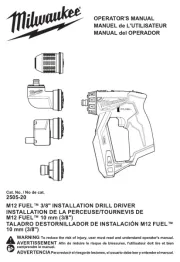
19 Augustus 2025
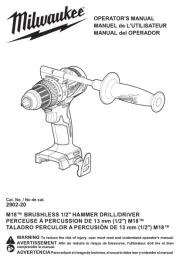
19 Augustus 2025
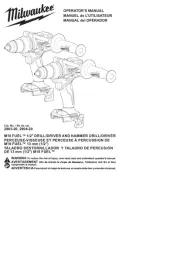
19 Augustus 2025
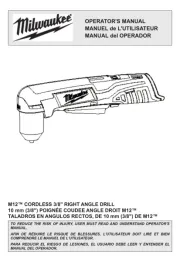
19 Augustus 2025
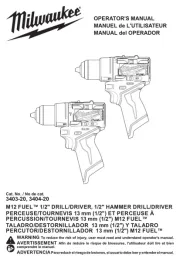
19 Augustus 2025
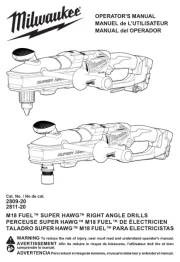
18 Augustus 2025
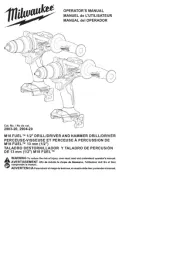
18 Augustus 2025
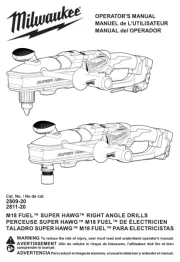
18 Augustus 2025
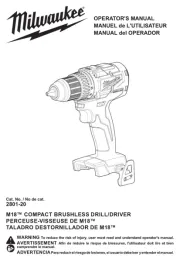
18 Augustus 2025
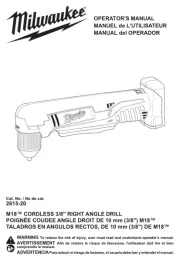
18 Augustus 2025
Handleiding Boormachine
- Fein
- Batavia
- Einhell
- Handwerk
- Truper
- Gamma
- Felisatti
- Vonroc
- Elu
- Topcraft
- Global
- Alpha Tools
- Berner
- Bavaria
- Maktec
Nieuwste handleidingen voor Boormachine
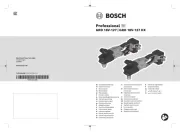
16 September 2025
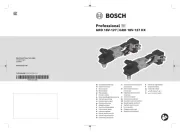
16 September 2025
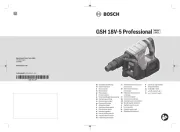
15 September 2025
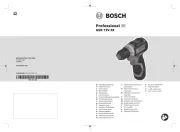
15 September 2025
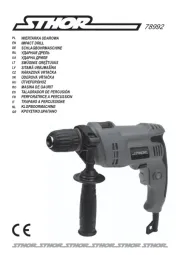
13 September 2025
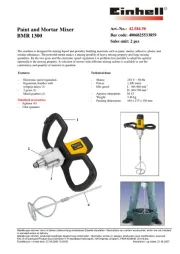
13 September 2025
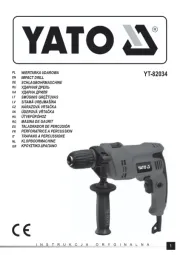
12 September 2025
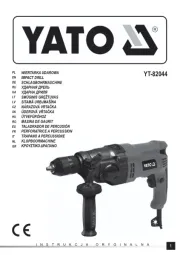
12 September 2025
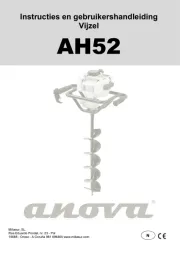
9 September 2025
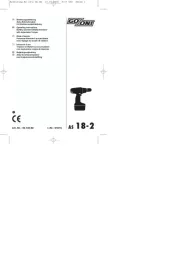
8 September 2025